Whether in a new home or an old home, a renovated bathroom can make a huge difference in the look and feel of a home. Read this essential advice on layout, surfaces and fixtures before you embark on your bathroom makeover so that you are well prepared.
Practical layout matters
While an open-plan bed and bath combo certainly sounds adventurous, a walk-in shower might not be for everyone. Privacy is a concern and you need to make sure the style of the sanitary fixtures and wares matches with your bedroom furnishings. On the other hand, taking down all the walls can present a spacious outlook and creates a sense of hotel grandeur. You can even watch TV while luxuriating in the bath or shower!
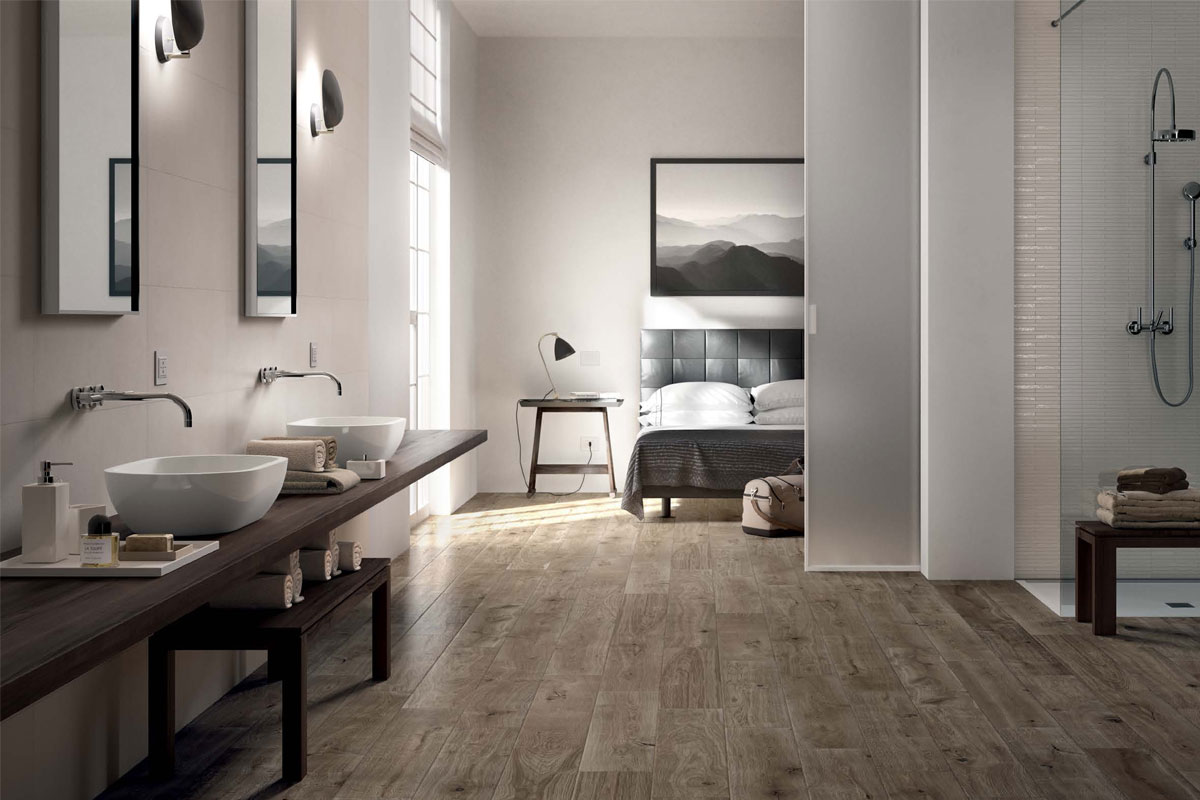
Image credit: Hafary
A more sensible spin-off of the open-concept bathroom, a semi-open layout sees the wet and dry zones of the bathroom being demarcated. The wet zone which comprises the WC and shower or bathtub is enclosed while the sink is pushed out into the open. The main benefit of this broken plan bathroom is that you get the privacy and one user gets the specific use of the dry zone without intruding on anyone in the wet zone.
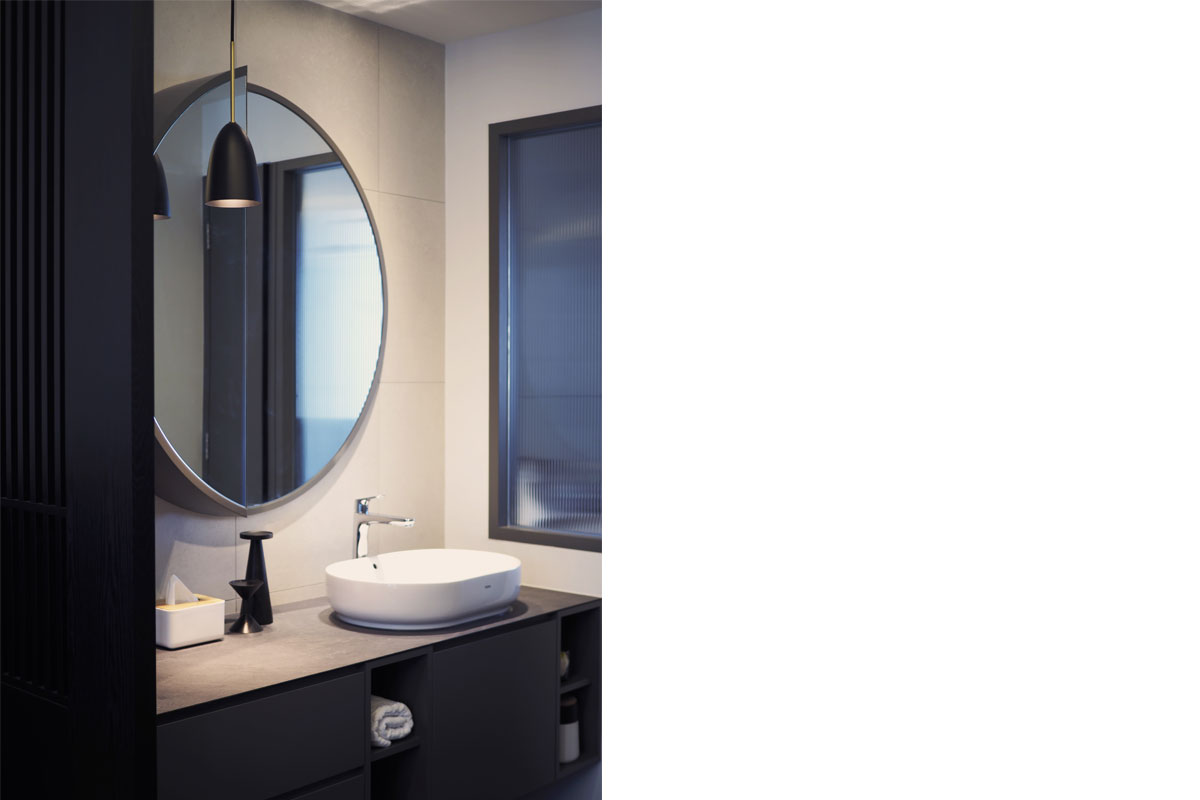
Image credit: KompacPlus
The right materials
Deciding on the surfaces such as the flooring, walls and sink countertops will give you a clearer picture on how the backdrop of your bathroom will appear, and how it complements with the rest of the design details.
Other than common tiles, quartz is a great surfacing option for both countertops and walls. Sally Liang, Head of Marketing & Communications, SEA, from Caesarstone says: “Caesarstone’s quartz is non-porous and resistant to mould, stains, heat, scratches and chips. With quartz-panelled walls, you’ll never need to scrub grout lines again.”
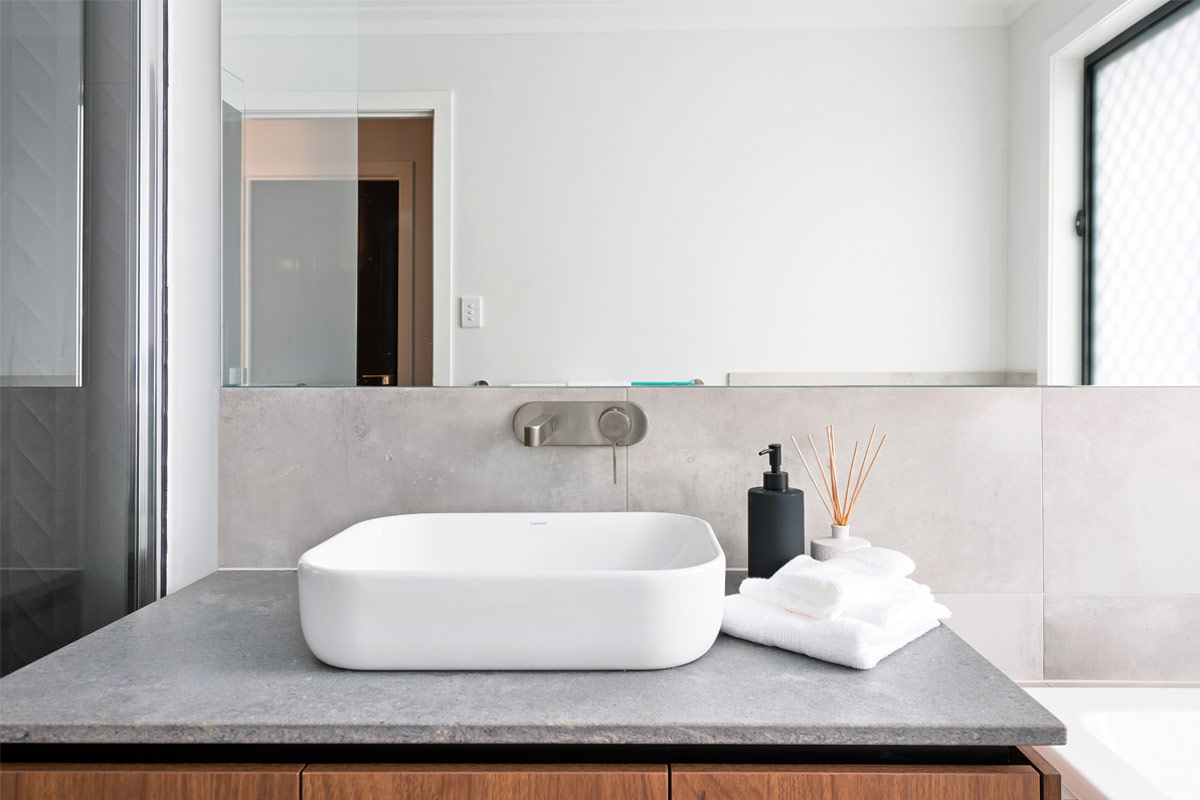
Image credit: Caesarstone
Another waterproof option is KompacPlus. “Unlike veneer or tiles, which forces homeowners to choose between water resistance or aesthetics, KompacWall presents the best of both worlds,” says Director Damien Tan from KompacPlus. “These wall panels offer a warm and inviting ambience while maintaining its durability. It never leaks or bubbles even when plumbing and fittings are installed behind the panels.”
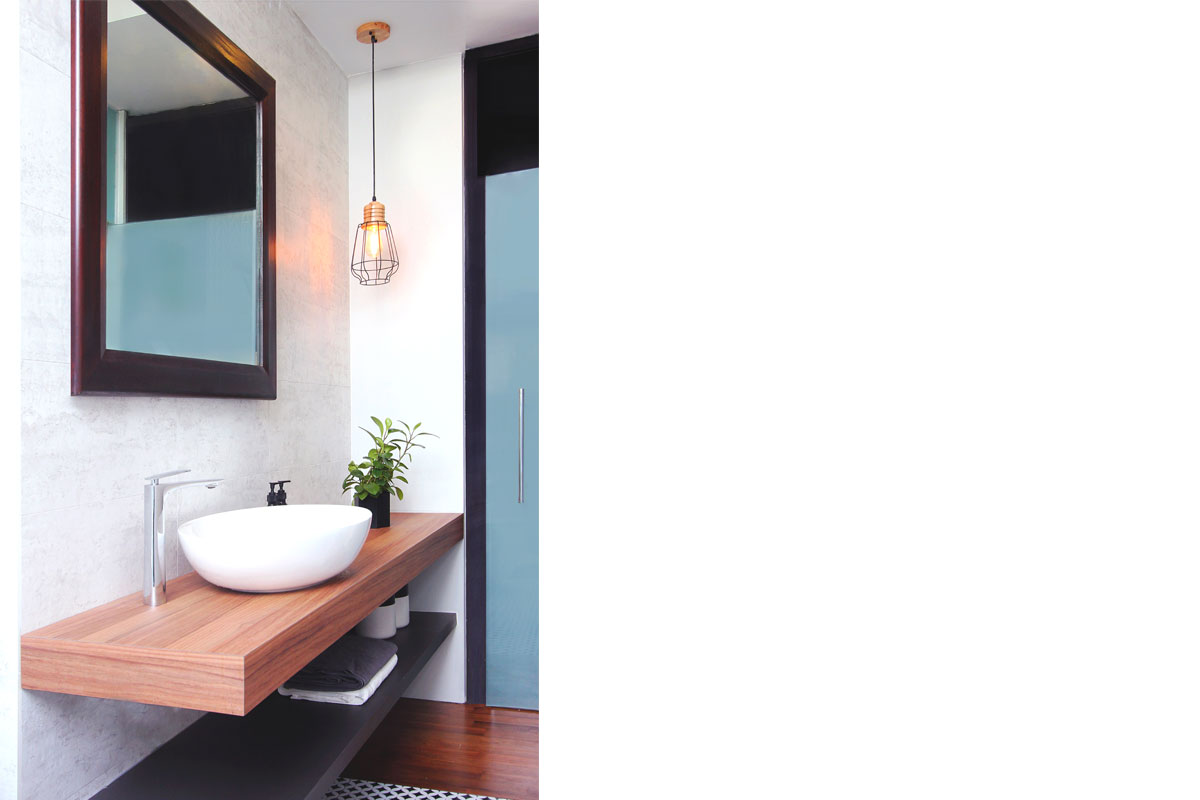
Image credit: KompacPlus
Storage solutions
Clutter in such a tiny room is a big no-no. That’s why you need the right storage solutions to organise and conquer your bathroom clutter.
Alustil’s revolutionary aluminium cabinets are powder coated and this forms a preventive layer against water, rust and termites. The inner corners of this extremely stable and durable cabinet are edgeless which accumulate minimal dust and also advocate easier cleaning. Fitted with peg holes, you can adjust the height of the shelves and this makes it customisable to store toiletries of different sizes.
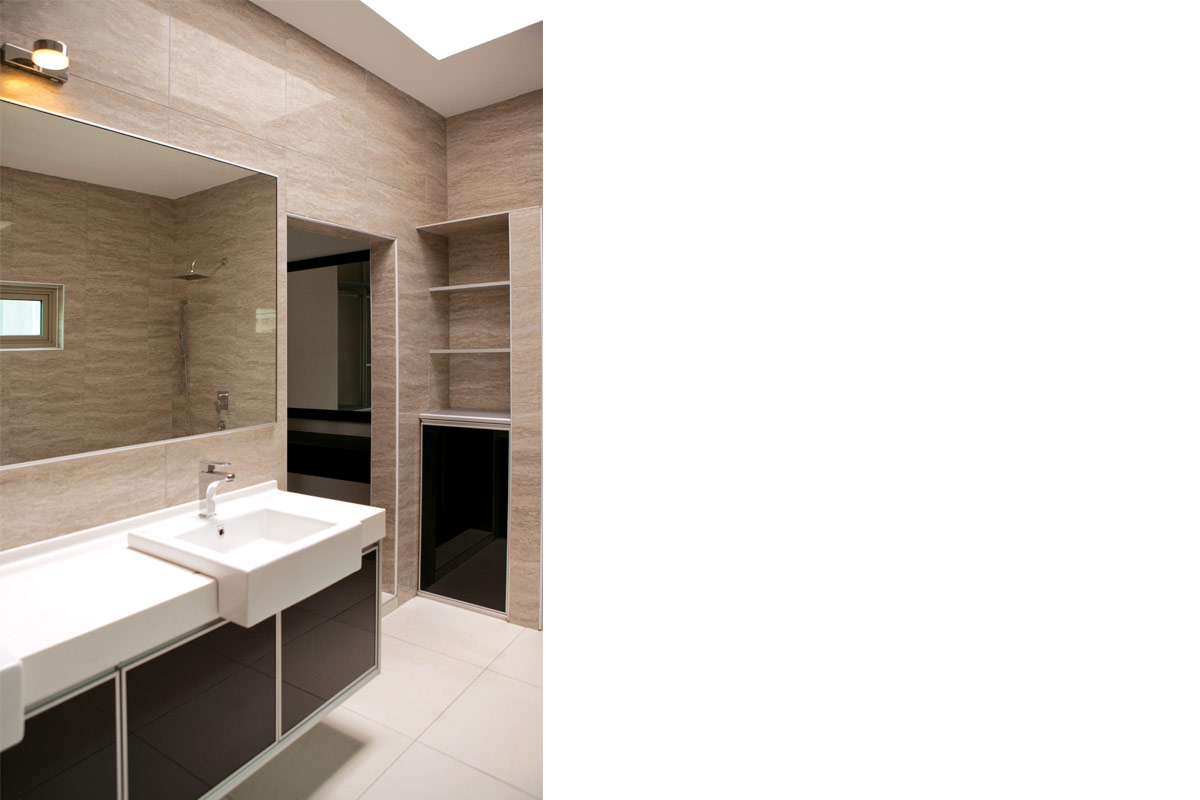
Image credit: Alustil
The String Plex system comes with clear Perspex side panels and offers a floating look which minimises the visual volume in the petite bathroom. With these modular shelves which adapt to your stuff and your future lifestyle changes, these wall-mounted panels are a highly customisable and intelligent storage system.
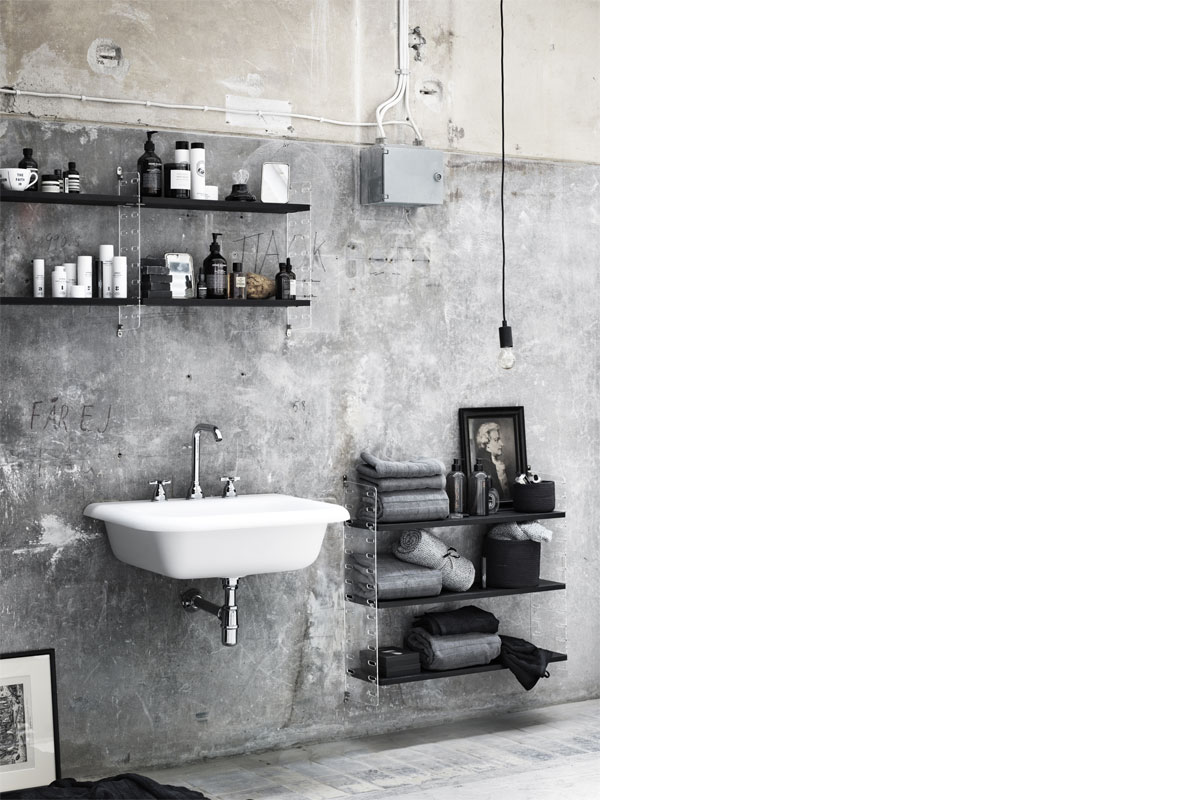
Image credit: String
Essential fixtures
More than just functional hardware, the bathroom fixtures you choose should make a style statement, save water and possess smart design features.
Mark Bickerstaff, Director of New Product Development Kitchen & Bath, at Kohler, shares his expertise on choosing water-efficient fixtures. He says: “Always choose a dual-flush toilet with great performance – this reduces water consumption enormously.” He recommends a smaller wash basin as less water is required to fill it up. For shower products, he suggests showerheads with the air induction feature. “This offers a luxurious experience much-reduced consumption in water,” he shares. He also recommends digital showers because of its warm-up function. “This prevents water from being wasted before entering the shower. It can also display the amount of time and water used in the shower.”
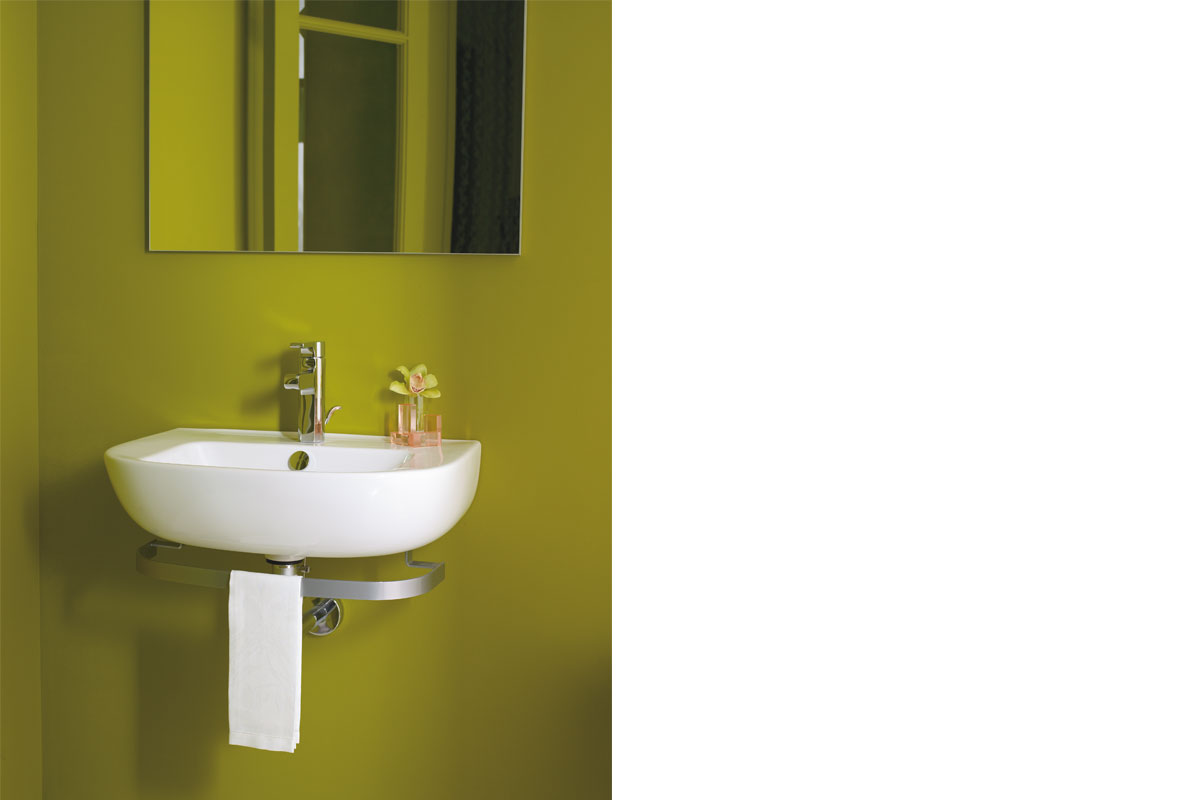
Image credit: Kohler
Piping concerns
To box up or not, creative ways of hiding or disguising unsightly piping will give you a better perspective on your resale bathroom’s reno.
If you don’t want to go through the trouble of concealing the piping, make it part of the bathroom’s decor. Director Bryan Low from Chapter B decided to integrate it as part of the design details. He explains, “I highlighted the pipes instead of hiding it to create some contrast lines in the bathroom.”
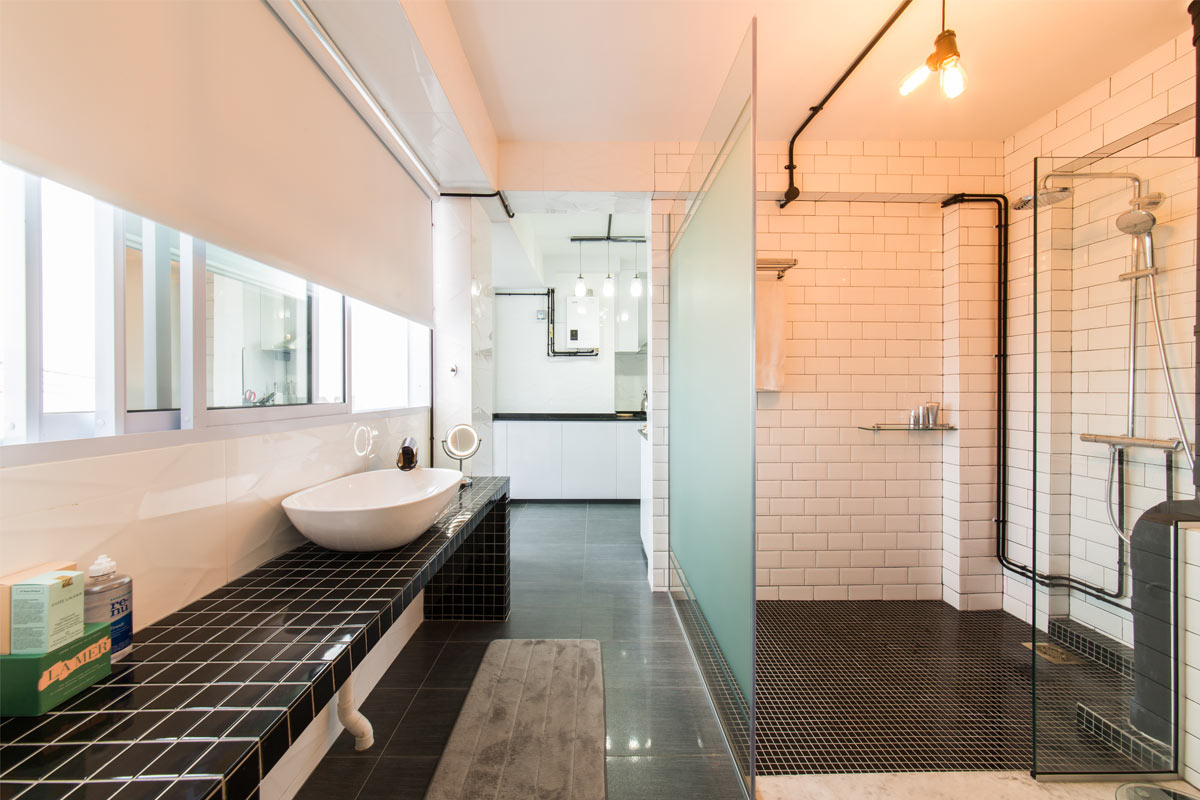
Image credit: Chapter B
But if you want to keep it neat, you can conceal piping behind wall tiles. Nash So from Altro who designed this bathroom says: “I would only recommend boxing it up if you are changing the old pipes to new ones. Ample consideration must be made on how to access the new pipes.”
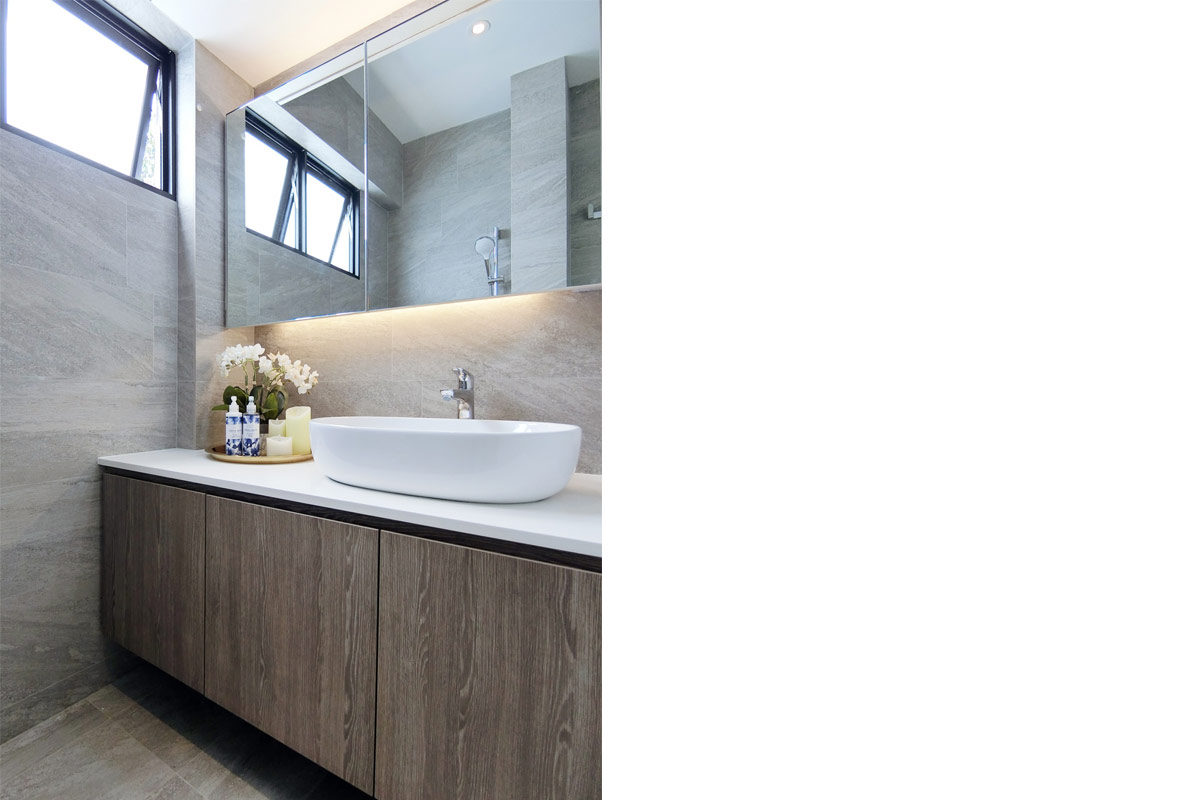
Image credit: Altro
This was adapted from an article originally written by Disa Tan published in the September 2018 issue of SquareRooms.



